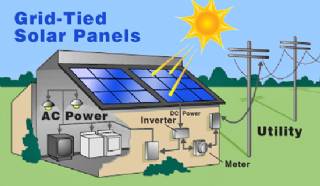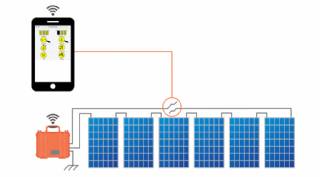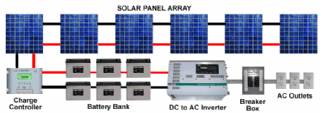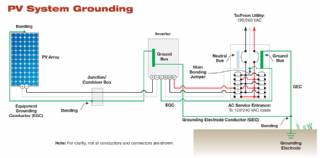Farming Principle: Deep Soil Preparation
Looking at GB as a three-legged stool, deep soil preparation is one of the legs. Deep soil preparation builds soil and soil structure by loosening the soil to a depth of 24 inches (60 cm). Ideal soil structure has both pore space for air and water to move freely and soil particles that hold together nicely. Air supports plant roots and soil organisms that give life to the soil and enhance nutrient availability for the plants.
Aerated soil holds water better than compacted soil, requiring less watering. It also facilitates root penetration, supporting healthy plants and minimizing erosion.To prepare the soil on your farm, determine where your growing beds will be and where your paths will be. (Paths are necessary because stepping on the bed compacts the soil, reversing the process of digging.) Recommended bed dimensions are 4-5 feet (1-1.5 m) wide and 20-25 ft (6.5-10 m) long for a total of 100 ft2 (10 m2). This bed size works well for labor and space efficiency, and for water retention. Make your paths wide enough for you to work easily, but not so wide that you sacrifice growing space unnecessarily. To double-dig, stand on a digging board positioned 12 in (30 cm) from the end of the bed. Facing the end, use a flat digging spade with a D-handle (or the tools available to you) to remove soil to make the first trench, 12 in x 12 in x 5 ft (30 cm x 30 cm x 1.5m). Put the soil you dig out of the trench in a bucket, basket, wheelbarrow or pile to save for later. Some of this soil will go back into the bed to complete the double-dig, and some can be used for compost building and to start seeds. (More about the uses for bed soil later.) With a D-handled digging fork (or other locally available tool), gently loosen the lower level of the first trench 12 in (30 cm) deep. If you cannot penetrate 12 in (30 cm), simply loosen as deeply as you can. Each year the soil will improve from a combination of double-digging and the growing action of roots, until you are able to achieve a loose, healthy soil structure to the full 24 in (60 cm). Next, move your board 12 in (30 cm) back from the first trench to expose more soil to begin the second trench. Using your digging tool again, move the soil from the top 12 in (30 cm) into the first trench. Now you have a new trench. Loosen the soil in the bottom of this second trench, as deeply as you can. Repeat this pattern until you reach the other end of the bed. At the end you will have one last trench to fill. This soil comes from the soil you removed from the first trench. Fill the trench and rake your soil smooth, your bed is ready for compost. You have crafted the first leg of the stool. Notes to Refine Deep Soil Preparation: Soil of proper moisture level (like a wrung-out cloth) will be the easiest to work with.
If the soil is too dry or too wet it is more difficult to dig and the soil structure can be damaged in the process. Make your job easier and take care of the soil by watering the bed or keeping it dry, as appropriate, in preparation for digging.
Choose cool and comfortable times of day for digging. Working in the heat of the day exposes the soil organic matter to accelerated oxidation and more will be lost. The farmer uses less energy digging in the cool of the day, too!
If the soil is very compacted, it may not be possible to dig 24 in (60 cm). Simply dig as deeply as you can and let the plant roots help you. You can plant deep-rooting crops to accelerate this process. Remember this is part of building soil structure, over time the full depth will be achievable!
Another important part of building soil structure is supporting the beneficial interactions between the organisms living in the soil, the roots, and the soil itself. The disruption of deep soil preparation is best limited to once every growing season, until good soil structure allows you to dig less often.
If your soil is overly loose due to sand, double-digging is not helpful. Instead you will want to build soil structure by adding organic matter in the form of compost and keeping plants growing year-round so roots can support soil microbial life.
Labels
farmingfarmingagriculturesoil healthtechnologyconservationvertical farmingsustainabilityclimate changeorganicgardentomatoagriculture (industry)farmer (profession)irrigationsustainable agriculture (organization sector)aquaponicshow to grow herbs in potshow to grow herbs in kitchenhow to grow plants at homehow to grow herb plantayurvedic medicinepoovaliterrace gardeningsoil less farmingnews in tamiltamil newsnews 7 tamil
Smart Home Ecosystem - Smart Home Automation - Smart Home Security - Smart Home Technology
The outer-most level corresponds to the individual devices and sensors that consumers interact with. Several candidates are vying for the role of a leader introducing smart home services to the mass market.

Solar Energy Systems - Solar Modules - Solar Electric System Design - Solar Power
The heart of a photovoltaic system is the solar module. Many photovoltaic cells are wired together by the manufacturer to produce a solar module. When installed at a site, solar modules are wired together in series to form strings. Strings of modules are connected in parallel to form an array.
Solar Energy Systems - Array Mounting Racks - Solar Ray - Solar Panel - PV Racks and Mounts
Arrays are most commonly mounted on roofs or on steel poles set in concrete. In certain applications, they may be mounted at ground level or on building walls. Solar modules can also be mounted to serve as part or all of a shade structure such as a patio cover. On roof-mounted systems, the PV array is typically mounted on fixed racks, parallel to t

Solar Energy Systems - Grounding Equipment
Grounding equipment provides a well-defined, low-resistance path from your system to the ground to protect your system from current surges from lightning strikes or equipment malfunctions. Grounding also stabilizes voltages and provides a common reference point. The grounding harness is usually located on the roof.

Solar Energy Systems - Solar Inverter - Solar Panel Inverter
Most grid-connected inverters can be installed outdoors, while most off-grid inverters are not weatherproof. There are essentially two types of grid-interactive inverters: those designed for use with batteries and those designed for a system without batteries.

Solar Energy Systems - Solar Disconnects
Automatic and manual safety disconnects protect the wiring and components from power surges and other equipment malfunctions. They also ensure the system can be safely shut down and system components can be removed for maintenance and repair.

Solar Energy Systems - Solar Battery Bank
Batteries store direct current electrical energy for later use. This energy storage comes at a cost, however, since batteries reduce the efficiency and output of the PV system, typically by about 10 percent for lead-acid batteries. Batteries also increase the complexity and cost of the system.

Solar Energy Systems - Solar Charge Controller
A charge controller, sometimes referred to as a photovoltaic controller or battery charger, is only necessary in systems with battery back-up. The primary function of a charge controller is to prevent overcharging of the batteries. Most also include a lowvoltage disconnect that prevents over-discharging batteries. In addition, charge controllers pr

Solar Energy Systems - The NEC and PV Systems
Solar PV systems must be installed in accordance with Article 690 of the National Electric Code, which specifically deals with PV systems, as well as several other articles of the NEC that pertain to electrical systems in general. When there is a conflict between NEC 690 and any other article, NEC 690 takes precedence due to the unique nature of PV

Ventilation Systems - Natural Ventilation
The bigger the both factors are the more intensive is the air change in rooms. This means that in colder weather conditions the rooms and the building is often over-ventilated and in warmer and windless weather, there is a lack of fresh air. As both of these factors are directly dependent on the external climate, the system is considered to be a no